Have you ever watched Pawn Stars on the History channel? They are presented an item that someone wants to sell to them. They bring in an expert and the expert tells everyone exactly what it is and what the item is worth. It never fails that the customer wants to sell the piece for what the item is worth, and that is exactly why people who are in the business of selling to make a living just won’t appraise art pieces, because when they tell you that they will give you 30% to 50% less than what they can sell it for they just look like real greedy business people.
So, here are some techniques you can use to determine by yourself what your Native American made jewelry is worth. You can us this information to sell or just know what you have. Lots of jewelry comes through our Trading Post doors that was handed down. If you are going to give your art away, it is always a good thing to let the person who is receiving the gift to know what they have and an idea of what is worth.

I am going to use two pieces, this will just help to show differences, but the techniques are designed to use for a single piece.
- Determine what you have. Usually, when we talk about Native American jewelry, we are talking about Navajo, Zuni, or Hopi jewelry. You have similar styles in each group, and you definitely can have a Zuni artist that makes Navajo style, but usually the work’s characteristics tell you what it is. Brushed all silver overlay jewelry, good chance it is Hopi. If the work has inlay or fine lapidary work, possibly Zuni. Heavy with big stones and lots of silver work, you might just be looking at a piece of Navajo art.
These two pieces are classic Navajo styles.
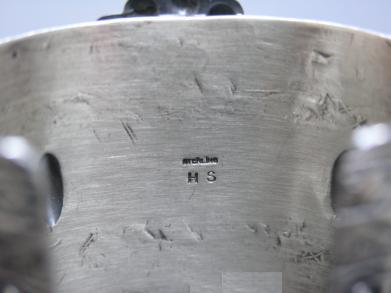
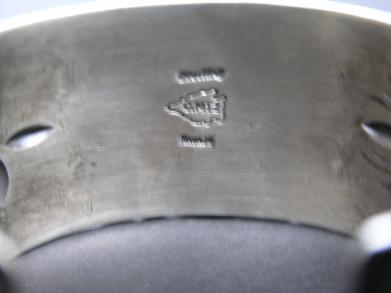
- If the piece is older, pre-1970s, there is a very good chance that the piece will not have a hallmark. However, most newer pieces will be hallmarked by the artist. If you can determine who made your jewelry, you are on the way to getting lots of extra help from the world wide web. The two pieces I have used are made by Henry Sam and Calvin Martinez. Henry Sam uses a hallmark just like that of artist Herman Smith, so remember to also include the style of work in helping you determine the maker.
Visit this discussion for resources on how to help you find your artist.
Resource Link…
Once you have the name, let the internet help you, by using search terms in a browser like Google.

This will help you find other work by the determined artist and start to get an idea of what the work is being sold for.
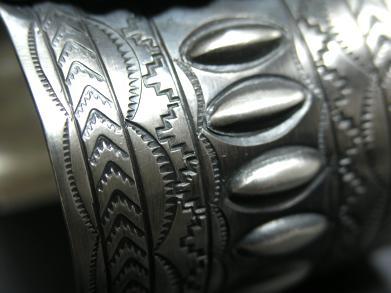
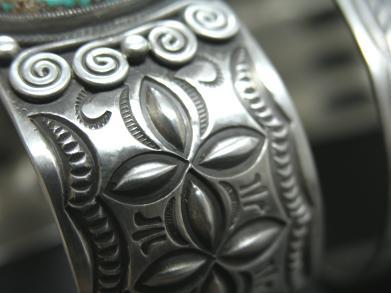
- Your art is going to be made from materials that have intrinsic value, the trick is finding out what that value is. Weighing your piece is going to allow you to get a close guesstimate of how much silver cost is in your piece (remember stone is going to have weight, 155 carats in a troy ounce). Once you have the weight visit a site that will have the daily silver rate because that is what the value is, even if your jewelry was made in the 1950s the silver’s replacement cost is today’s market. Use a site like Indian Jewelry Supply who post on the home page the current market price.
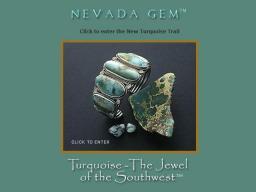
If your jewelry is made with gold, you can use the same process, but it can be very difficult to get an exact cost if the piece has silver and or stones. Plus, remember that labor cost is usually twice for gold than silver which is another factor that is going to play into the final cost.
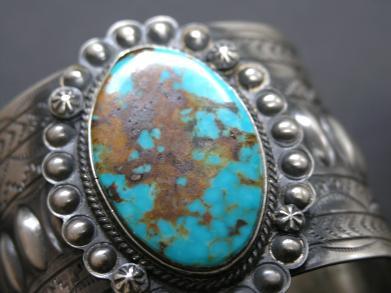
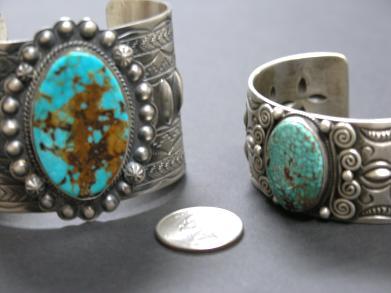
Turquoise, well lets just say this rock comes from many different places and has many different prices. With prices ranging from under $1 a carat (we have seen many stones for as little as a 10 cents a carat) to a couple hundred a carat, you really need to work on finding out what you have.
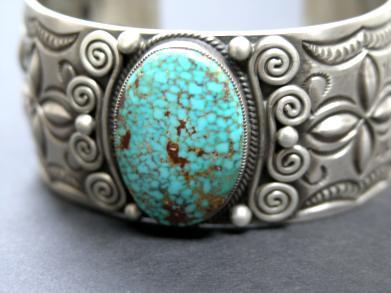
Honest sites like nevadagem.com can help. You can find images of what some of the different stones look like and then a price for that grade. Remember, a low grade piece of turquoise is significantly different in cost from a high grade from the same mine.
Many turquoise dealers will use a coin to show the size of the turquoise, and in their details will give you a carat weight. Of course backing (the material the stone sites on) can have a significant change in the weight of the stone, but use it as a simple guide. Put a quarter next to your stone and find something similar on the turquoise dealer site, and you have a rough idea of carat weight.
- Not all artists are equal. Something made by Perry Shorty is going to be a different price than something made by Freddie Maloney, even though the work might have some similarities. So, look over the work and compare it to other work.

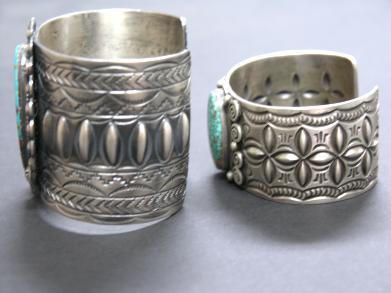
Henry Sam’s bracelet compared to the Calvin Martinez bracelet has more silver, a heavier stone, but has a retail cost of $225 compared to the $400 price tag of the Martinez piece.
Look at the difference in the stamp work, Calvin is very precise and clean. Also, when you search Calvin’s work you will find that he has a signature revival style, and Henry is a piece worker and makes many different styles. The difference is that Calvin has established a style that is collected, you can identify his pieces by the work, the bracelet by Henry could have been made by a number of artists.
- Last, think about the source. When you are on vacation in Monterey, CA and stop at one of the roadside fruit stands, it is an excellent chance to get strawberries for considerably less then you would in New Mexico because you are “at the source.” That is exactly what Gallup is, the source for Native American jewelry. So if you are comparing cost to other work, remember that pieces sold in New York will likely appraise much higher than pieces sold in New Mexico.
Finally, use reputable resources like this forum, we actively check the posts and are always happy to give our feedback.
~PNT~